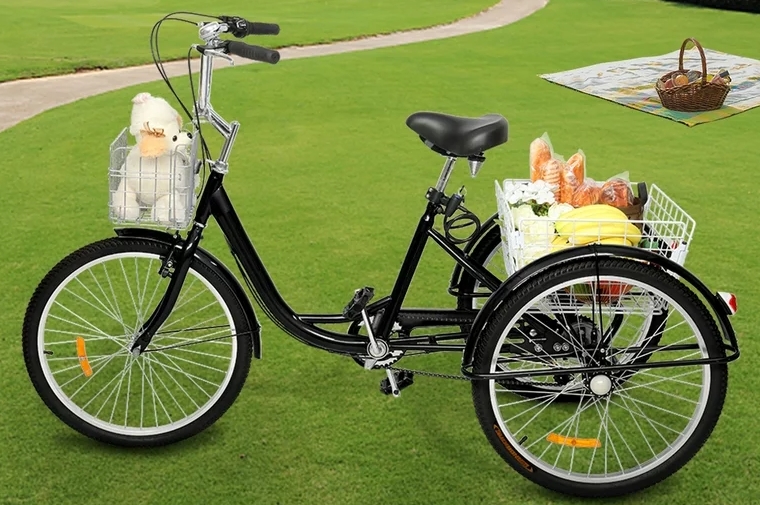Trikes cannot break stone due to their size and construction limitations. However, they are versatile vehicles that can navigate various terrains and offer a smooth ride for recreational purposes.
Introducing a trike, a three-wheeled vehicle, which although unable to break stone due to its size and construction limitations, serves as a versatile mode of transportation ideal for recreational purposes. Trikes provide individuals with a unique way to explore and enjoy the outdoors.
Designed with stability and maneuverability in mind, these vehicles offer a safe and smooth ride, even on rough terrains. From leisurely rides along scenic paths to thrilling adventures on unpaved trails, trikes cater to diverse preferences. With their wide variety of styles and features, trikes are suitable for people of all ages and fitness levels, making them a popular choice for individuals seeking an exhilarating outdoor experience. Get ready to embark on countless adventures with a trike, as it takes you places where ordinary bikes or cars simply cannot venture.
How Trikes Are Constructed For Durability
Trikes are constructed with durability in mind, using a combination of high-quality materials, reinforcements, and support structures. The materials used in trike construction play a crucial role in ensuring their strength and longevity. For instance, aircraft-grade aluminum or steel frames are commonly used due to their lightweight yet sturdy properties. These materials offer excellent resistance to impact and are capable of withstanding the wear and tear of regular use.
Reinforcements and support structures further enhance the durability of trikes. These include features such as reinforced joints, double or triple clamp systems, and sturdy handlebars. By incorporating these elements, trike manufacturers ensure that the frame and key components remain securely in place, even under intense pressure.
In addition to materials and reinforcements, design factors are also considered to maximize durability. These include optimizing weight distribution, placing emphasis on load-bearing areas, and implementing proper suspension systems. The design process takes into account the various forces exerted on the trike during operation, such as impacts, vibrations, and weight distribution.
Overall, trikes are constructed to withstand the test of time by utilizing durable materials, incorporating reinforcements and support structures, and integrating thoughtful design features. This ensures that trikes can endure the challenges of real-world usage and continue to provide a reliable and sturdy means of transportation for individuals of all ages.
Impact Of Stone On Trikes
Types of stones encountered on roads and trails
Trikes can encounter various types of stones while riding on roads and trails. These stones can range from small pebbles to larger rocks. Some common types of stones that trikes may come across include gravel, shale, limestone, and granite. Each type has its own characteristics that can impact the trike’s performance and durability.
Stones on the road or trail can pose a potential risk to trikes. When a trike collides with stones, it can lead to damage and wear and tear on various components. The impact can cause scratches, dents, and even structural damage to the frame. In addition, stones can also damage the wheels, tires, and suspension system.
Some areas of a trike are more vulnerable to stone damage than others. The front wheel, especially the fork, is at high risk as it directly encounters stones on the road or trail. The rear wheel, especially the rear derailleur, is also susceptible to stone damage. The underside of the trike, including the frame and bottom bracket, can also be at risk. It is important to regularly inspect and maintain these vulnerable areas to minimize the impact of stones.
Preventative Measures
Trikes are especially prone to break stone due to their design and the amount of force exerted on the wheels. However, there are several preventative measures that can be taken to minimize this risk.
Using fenders and mudguards on the trike can help protect against stone breakages. These accessories help to shield the wheels from direct contact with stones and debris, reducing the chances of damage. They also help to prevent splashes of water and mud, ensuring a safer and cleaner ride.
Protective coatings and films applied to the wheels can provide an additional layer of defense. These coatings can help to absorb impact and reduce the likelihood of cracks or breaks. It is important to regularly inspect and maintain these coatings to ensure their effectiveness.
Awareness of road conditions is crucial in preventing stone breakages. Being mindful of the terrain and the presence of loose stones can help riders anticipate and avoid potentially damaging situations. Additionally, adjusting the speed and angle of the trike when encountering rough or rocky surfaces can further reduce the risk of stone breakage.
Conclusion
Trikes possess immense strength and durability, but breaking stone is an arduous task. While they may be able to withstand rough terrains and maneuverability, the hardness and density of stones can pose a challenge. It is important to consider the limitations and capabilities of trikes when it comes to tasks involving stone breaking.
Nonetheless, trikes continue to offer an enjoyable and practical mode of transportation for various purposes.



